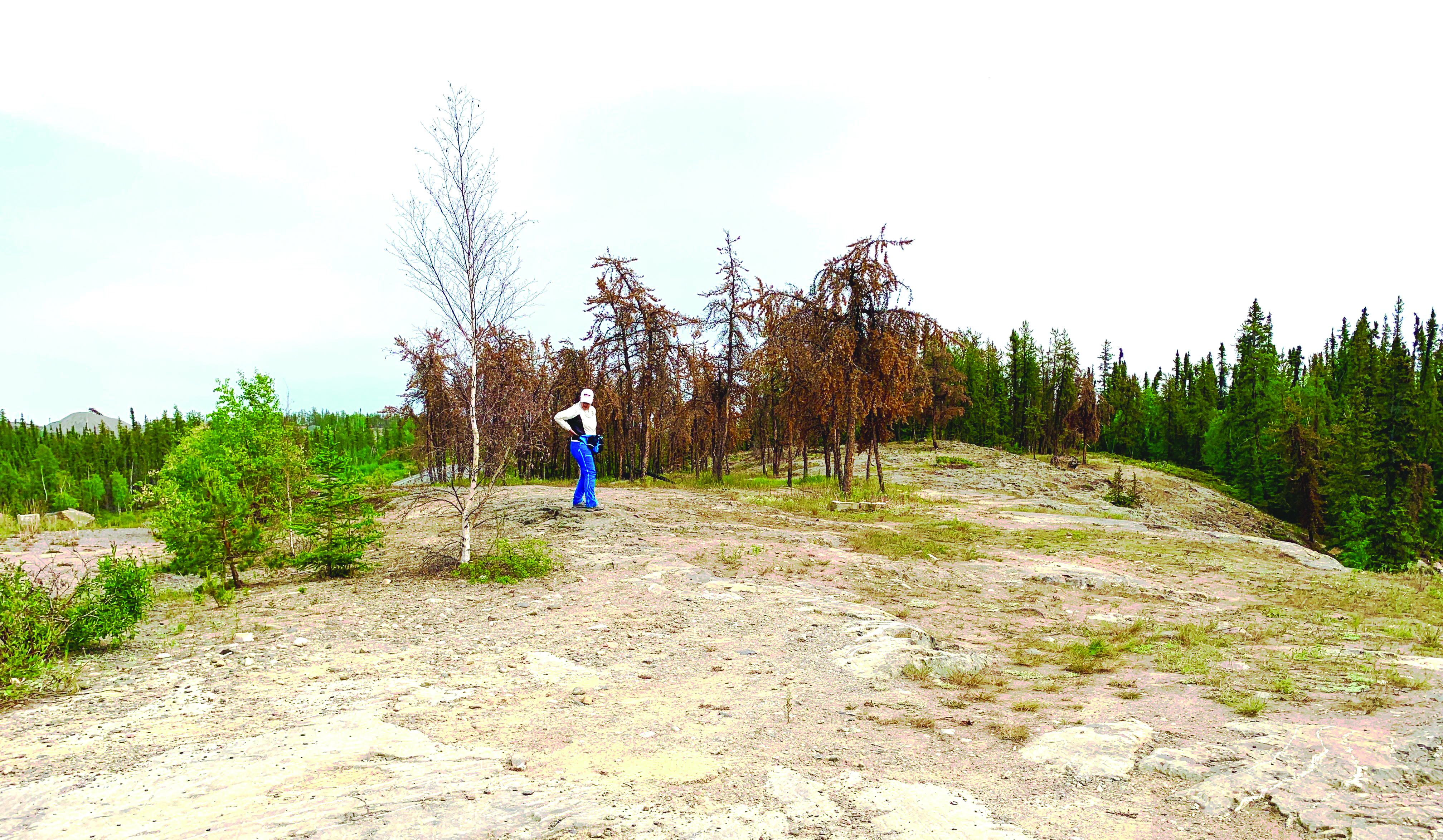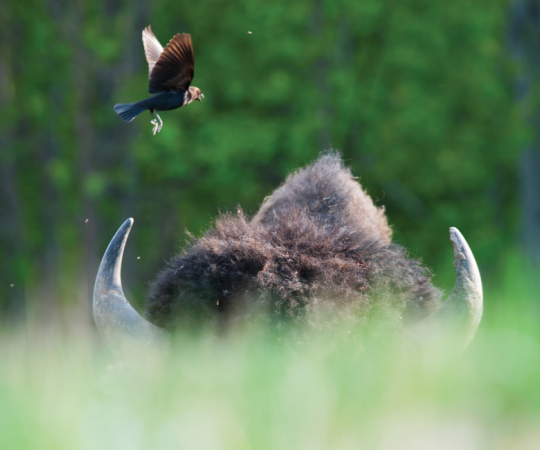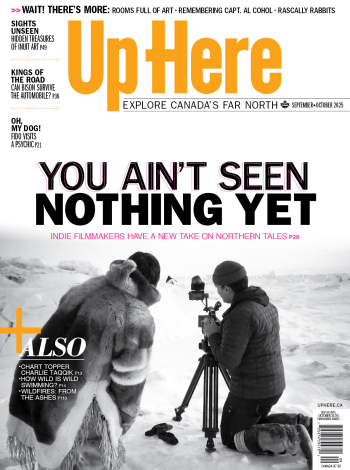Summers with extreme fire danger are no longer exceptions. Many fires are much more destructive, burning hotter than in the past. Weather is more unstable, with longer periods without rain, then heavy rains combined with high winds causing extensive flood-related damage in previously burned areas. As I write this in mid-July, we’re experiencing another summer of wildfires. In the North, 1989, 2014, 2023 and 2024 were extreme fire years.
The boreal forest and much of Canada’s prairie have long been affected by swift-moving, low-temperature fires. But a century of fire prevention—often ignoring time-tested Indigenous practices of burning to manage species such as bison and deer—created forests ripe for destruction: thick layers of dry vegetation on the ground, dead limbs on lower portions of trunks and flammable peat layers. Some extensive wildfires can perhaps be blamed on forest management or human activity, but most are related to climate change, shifting weather patterns and more extreme weather events on land now predisposed to ultra-hot fires.
In the North, early-season fires (from March to May) are almost always human-caused: campfires not extinguished, cigarette butts flipped into dry vegetation, debris-burning and hot vehicle exhaust systems in contact with dry grass. Rare but still of concern are fireworks, bear banger use and arson.
Once summer is in full swing, unstable weather systems sweep the land, spawning violent thunderstorms, and lightning starts most mid- to late-summer fires. Rain following the lightning may extinguish these fires, but many systems are “dry” (lacking rain), and multiple fires can start with one storm. Due to the dry conditions, many wildfires now burn hotter and can destroy ground cover down to mineral soil, scorching even the lichens on rocks.
In a fast-moving fire, trees may be scarred but not killed. Ground vegetation burns, but the fire moves so quickly that roots may not be damaged, and some plants can regenerate from roots. The canopy is often completely burned, allowing sunlight to reach the forest floor. Seeds and spores of plants that aren’t shade-tolerant then have a chance to germinate, some appearing just weeks after a fire.
But hotter fires or those that “stall” may incinerate all vegetation, including downed timber and ground cover such as lichens and moss and even peat. Regeneration then must rely on seeds that blow in. The plant communities may change completely, from boreal forest to deciduous forest made up of aspen (often with birches and poplars), rather than spruce. Aspen forest generally supports sparser growth of lichens, so they are less likely to attract wintering herds of caribou. But aspen and other deciduous forests are more resistant to fire, so from a fire prevention perspective, it’s a positive change.
Holdover or “zombie” fires burn throughout the winter under the snow cover. They re-ignite the following summer, before lightning season, starting in areas that burned the previous year. These were originally thought to occur mostly in peatlands, but there’s increasing evidence, based on field studies by researchers from Wilfrid Laurier University and others, that they occur in a variety of habitats, including upland forests, where the fires smoulder in tree roots and trunks beneath the snow. Warmer winters, less snow cover and earlier springs allow these fires to actively ignite and start burning again above ground.
Researchers originally thought that holdover fires, re-igniting in previously burned areas, would result in slower regeneration of vegetation. But they found that regeneration proceeds at about the same rate as in adjacent similar areas. In addition, research indicates that the response to fire in NWT forests may differ from the response to fire in other boreal forest areas. Pre-fire forest communities, soil type and long-term moisture availability may account for these differences.
Observing the changing ecology of fires and what happens in their aftermath leads to a better understanding of how wildfires affect the North and how climate change affects our land.
 Photo by Page Burt
Photo by Page Burt
What to Look for in a Burn Area
Drive on most northern highways and you’ll pass places where wildfire approached or crossed the road. If you stop to explore these areas, you’ll get a close-up look at the effects of past fires.
- Make sure it’s not an active fire, wear sturdy hiking shoes and walk on mineral soil rather than downed timber.
- To identify a burn, look for large numbers of standing dead trees without limbs and no understory vegetation but often large quantities of young trees or herbaceous vegetation (or both).
- The number of whorls (where multiple branches emerge from the trunk) on the young spruce or jack pine trees indicate the terminal bud for a given year. These trees can be “aged” up to about 18 years before the older whorls of branches are less “countable.” Alder, willow and other shrubs usually quickly develop sprouts from the base of the burned stems.
- Tree regeneration is usually noticeable two to five years after a fire, resulting in an “even-aged” forest with all trees about the same age.
- Jack pine cones open in a fire, releasing seeds. These germinate in the months after the fire, producing seedlings by the next year.
- Horsetails and morel mushrooms appear the year after a fire, especially in areas with some moisture.
- Tall fireweed, groundsel, hawksbeard and other herbaceous plants appear a year or two after fire. They do well in full sun, but they fade away after about five years as the ground becomes more shaded.
- Low shrubs including kinnikinnick, Labrador tea, raspberry, lingonberry, soapberry and wild rose usually appear in the second year after a fire and expand quickly. Many develop from unburned rootstocks, rather than from seed.
- A ground fire destroys most lichens. Exposed surfaces of outcrops are denuded, even of crustose lichens, while more protected areas in the lee of the rocks still retain some or most lichens. Ground and tree lichens are usually obliterated. Lichen communities take decades to regenerate.









